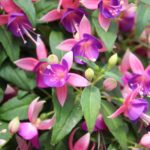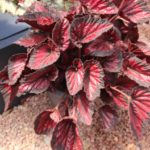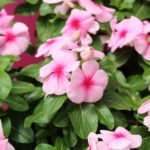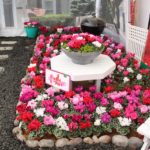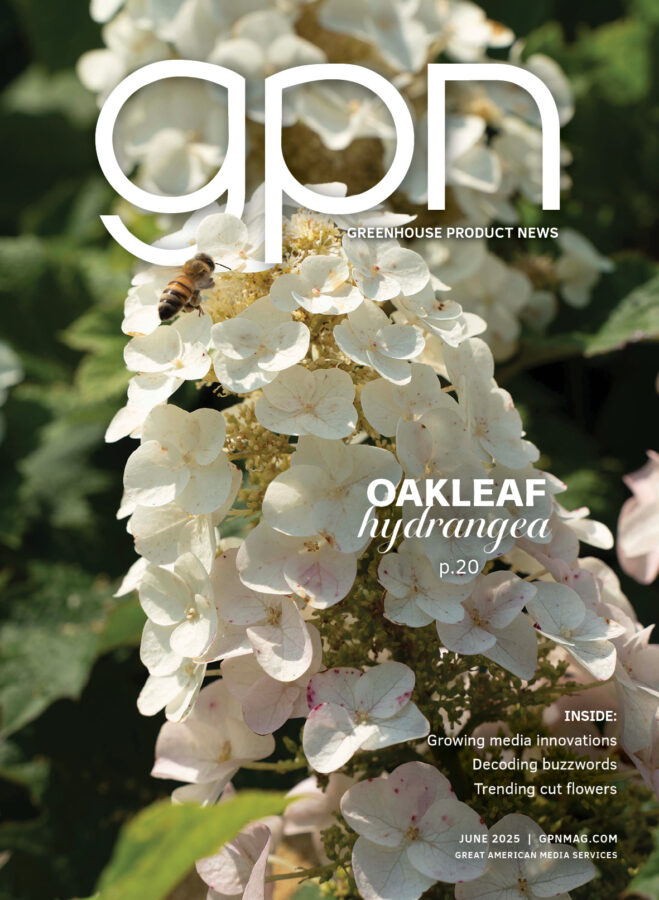
Crop Culture Report: Antirrhinum Candy Showers Series
The snapdragon Candy Showers series, available in five bright colors, is the first trailing snapdragon series available from seed and represents a completely new item for spring and fall sales.
Sakata Ornamentals is recognized as a world leader in flower genetics and is proud to introduce this new trailing snapdragon, bred in Japan. Snapdragons are very popular flowers due to their unique flower shape and bright colors. Most consumers are familiar with snapdragons as tall plants with long flower spikes. Candy Showers offers the same beautiful snapdragon flowers with shorter spikes and a spreading habit for use in ground beds, containers and hanging baskets.
Snapdragons are traditionally marketed for early spring sales due to their cold tolerance. Candy Showers varieties have wide weather tolerance and are suitable for both spring and late summer/early fall sales. Candy Showers complement other fall annuals, such as trailing pansies, and readily bloom under short days.
Seed of Candy Showers is sold as a multi-pellet with the goal of four-plus seedlings per pellet. Three multi-seeded plugs readily fill a 10-inch hanging basket and one multi-seeded plug easily fills a 6-inch pot. Plants are ideal for garden borders, spreading up to 1 foot.
Plug Culture
Candy Showers can be finished in four to five weeks, depending on the plug tray used. A 288 tray will finish in four weeks.
Stage 1. Select a sterile and well-drained media with a pH between 5.5 and 5.8 and an EC less than 0.5. Supply sufficient moisture to dissolve the pellet and target a temperature of 65° F. Snapdragon requires light to germinate, so leave it uncovered or apply a light cover of medium/coarse vermiculite if needed to maintain optimum humidity.
Stage 2. As cotyledons appear maintain the media moist but not saturated to promote strong root development. Fertilize lightly at 50- to 75-ppm nitrogen from a calcium nitrate-based formulation. Supplemental lighting may be applied to reduce crop time, but maintaining a 12-hour photoperiod is best to promote strong vegetative growth.
Stage 3. The first true leaves are now formed. Increase the fertilizer rate to 75- to 100-ppm nitrogen and apply once or twice a week targeting an EC of 0.75. Snapdragons are salt sensitive so leach as necessary. Maintain a temperature of 65 to 68° F and avoid ammonium nitrate which promotes soft growth.
Stage 4. At the end of stage 4 the plugs should have two to three sets of true leaves and the roots should hold the plug media together. Optimum air temperature is 60 to 65° F to help tone the plugs. Maintain the EC level at 0.75 to 1.0.
Finishing
Media. Select a sterile, well-drained media with a pH between 5.5 and 5.8 and low in nutrients (EC level less than 1.0).
Temperature. Optimum growing temperature is 60 to 65° F during the day and 60° F at night. Once established, the night temperature may be reduced to 50 to 55° F.
Fertilizer. Maintain the media EC between 1.0 and 1.5 by applying 150- to 200-ppm nitrogen as needed from a well balanced calcium nitrate-based formulation. The use of cal/mag formulations like 15-5-15 work well to supply adequate amounts of magnesium. Avoid high rates of ammonium, especially at low temperatures, which promotes softer growth and stretched plants. High pH (more than 6.5) results in iron chlorosis.
Lighting. Antirrhinum is a facultative long day plant. Providing long days (more than 14 hours) along with supplemental lighting, up to 2,500 foot-candles, will hasten development and flowering.
Growth regulation. Candy Showers have a natural spreading habit with strong basal branching. Plants should not require chemical growth regulation if given adequate space, high light (more than 3,500 foot-candles) and optimum fertilization. The key is to transplant on time so that plugs do not stretch prior to transplanting.
Pests. Watch for aphids, thrips and spider mites.
Diseases. Diseases that can affect Candy Showers are Botrytis, downy mildew, powdery mildew, Pythium, rust, Tomato Spotted Wilt Virus and Impatiens Necrotic Spot Virus.








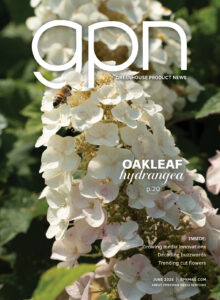
 Video Library
Video Library 


